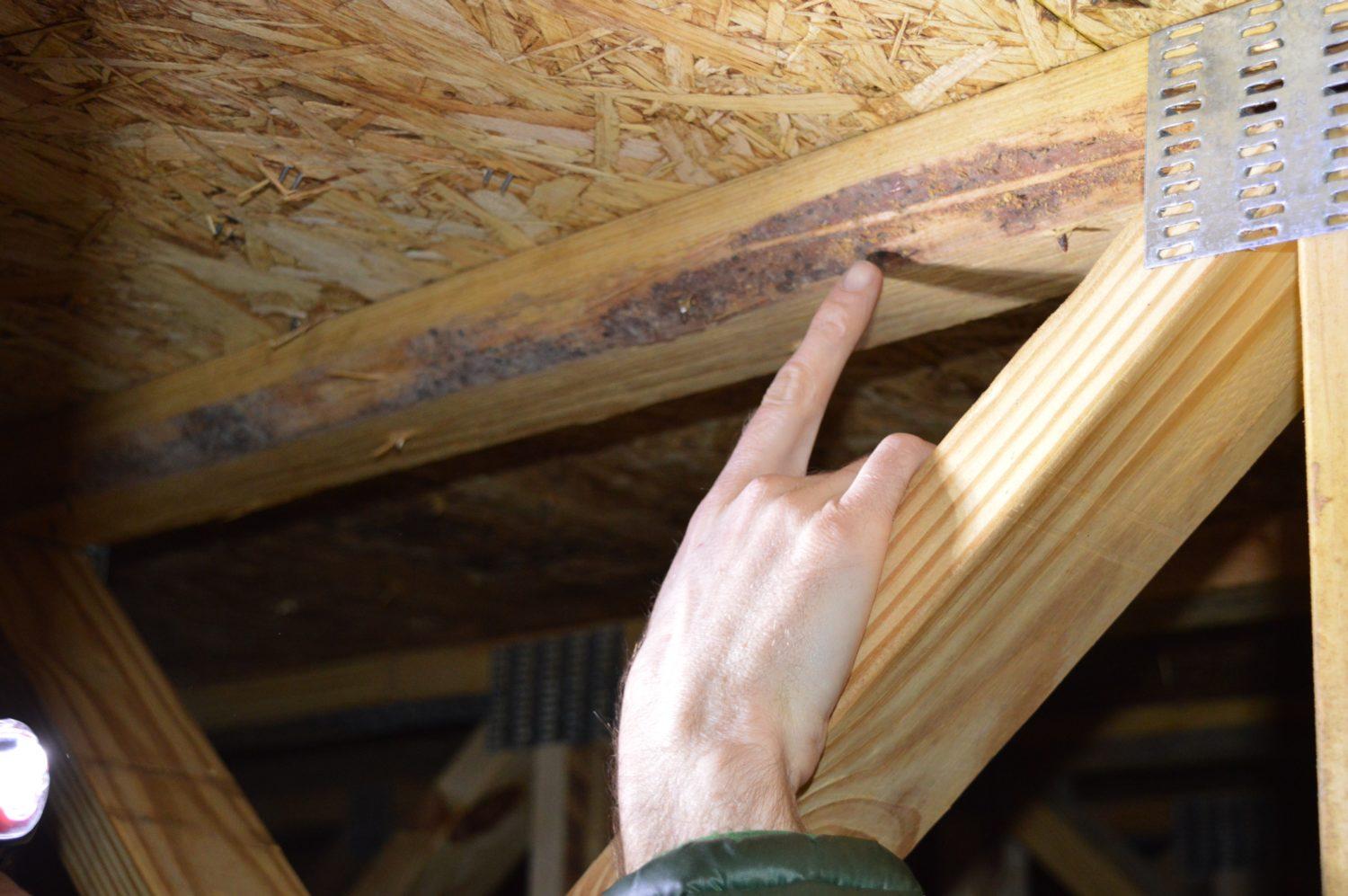
Mold spores growing on wood rafters
Mold is a type of fungus that can destroy parts of your home and can cause health problems. Some common areas in homes where mold could grow include: windows, drains, crawl spaces, basements, areas that had previous water leaks or flooding, and areas around moisture-generating appliances (e.g., dishwashers, dryers, or refrigerators).
Molds need 3 things to survive and grow – food, appropriate temperature, and moisture.
Our homes are full of potential food for mold (e.g., wood in framing and trim, paper in wall coverings and drywall, layers of dust inside ductwork, etc.). It just so happens that the temperature ranges in which humans are most comfortable are also the temperature ranges in which molds thrive.
The one thing we do have control over is our indoor moisture level. Take away the excess moisture, and the mold dies or goes dormant. Here are some basic ways to reduce moisture in your home, and thus reduce your chances of mold:
- Monitor your home’s humidity levels with an indoor humidity monitor and try to keep your home’s humidity between 30-60%. You can purchase wireless humidity monitors so that you can keep an eye on relative humidity levels in your crawl space or basement without having to go into those spaces. Some monitors connect with your smartphone and send alerts when humidity levels are too high. If you find that your home’s humidity levels are consistently high, try to find out the cause so that you can remedy it right away.
- Repair any water leaks immediately.
- Dry out water spills and leaks as soon as they occur and no later than 24-48 hours so that mold has less chance of taking hold.
- Run your bathroom exhaust fan or open a window when showering to let out heat and humidity, and continue to ventilate until the mirrors aren’t fogged up. Use a shower squeegee to quickly wipe down wet tile and shower doors.
- Make sure your dryer and bathroom exhaust fans are completely vented to the outside and use your stove’s exhaust fan when cooking to let the heat and steam out.
- Set your air conditioner at a temperature that helps to keep humidity down in the summer.
- For homes that are particularly humid, consider a dehumidifier with a humidity control. Look for an ENERGY STAR certified dehumidifier so that it’s energy efficient.
- Dry condensation on pipes, walls, windows, and other surfaces right away. To prevent condensation from occurring again, cover cold water pipes with insulation, repair windows that might have air leaks, and vent moisture-generating appliances. Condensation is a good indication that your home’s humidity levels are too high and you might need to run your AC or use a dehumidifier.
- If you cannot figure out the cause of high humidity, call a licensed indoor air quality specialist or residential home energy auditor.
Signs of Mold
If you have had previous issues with moisture, floods, or water leaks, you might have mold already. Some indicators that your home might have mold include a musty odor, allergies or asthma that worsens while you are at home, signs of water damage where mold thrive, and, of course, the visual presence of mold.
Since there are many types, mold can vary widely in appearance. It might be a black or white powder or grow in thread-like fashion. Look for signs such as dark patchy areas near windows or on the walls near appliances, small discolored spots on wood surfaces, or discolored spots on items made of fabric (e.g., suitcase, carpets).
In some cases, mold could be hidden from view. It can lurk behind wallpaper, under the carpet, and behind drywall. If you find that you have a large mold problem, call a mold remediation specialist. It’s important that mold is not just treated with chemicals but also physically removed. Even when mold is dead, it can still cause health issues if left in place.
For more information about mold, visit www.epa.gov/mold.
